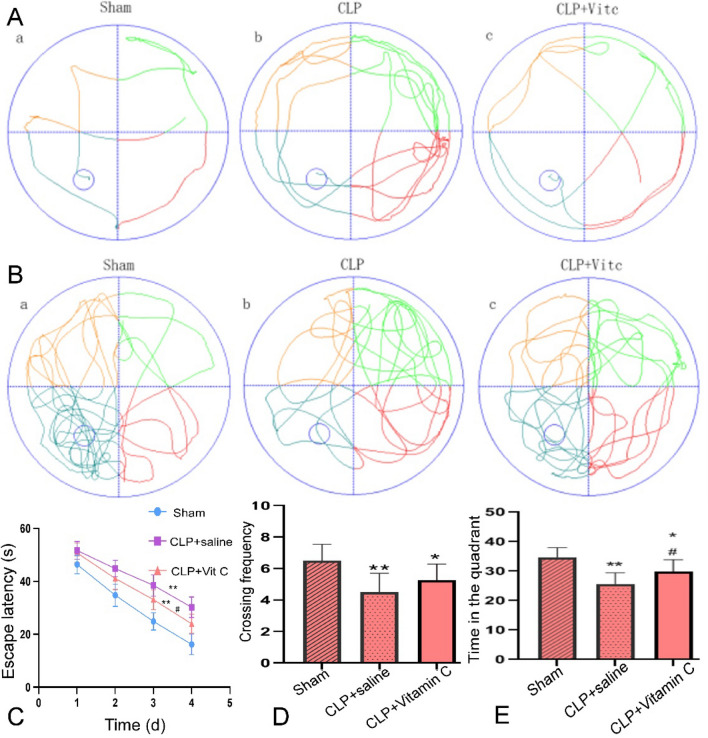Figure 1.
The performance of rats in three groups in the Morris water maze test. (A) Typical behavioral traces of three groups rats in the place navigation test. The more lines in the quadrants, the longer the escape latency. The rats in the CLP sepsis model group had significantly (P = 0.001) longer escape latency compared with the Sham and CLP + vitamin C groups. (B) Typical behavioral traces of the rats in three groups in the spatial probe test. The denser the blue lines in the quadrant where the platform is, the longer the retention time of rats. The rat retention time was significantly (P = 0.001) elongated in the platform quadrant in the Sham and CLP + vitamin C group compared with the CLP sepsis model group. (C) Comparison of the escape latency of the rats in three groups. The escape latency was significantly (P = 0.003) improved in the CLP + vitamin C group compared with the CLP model group. D&E. Comparison of the crossing frequency (D) and time (E) spent in the target quadrant of the rats in three groups, with significant improvement in the CLP + vitamin C group compared with CLP group. *P < 0.05 and **P < 0.01 compared with sham group; #P < 0.05 compared with CLP + saline group. CLP cecal ligation and puncture, Vit C vitamin C.

